Keyword
Integrated ecosystem monitoring and management
27 record(s)
Type of resources
Available actions
Topics
Keywords
Contact for the resource
Provided by
Years
Formats
Representation types
Update frequencies
Status
Scale
panaceaKeywords
GEMET keywords
-
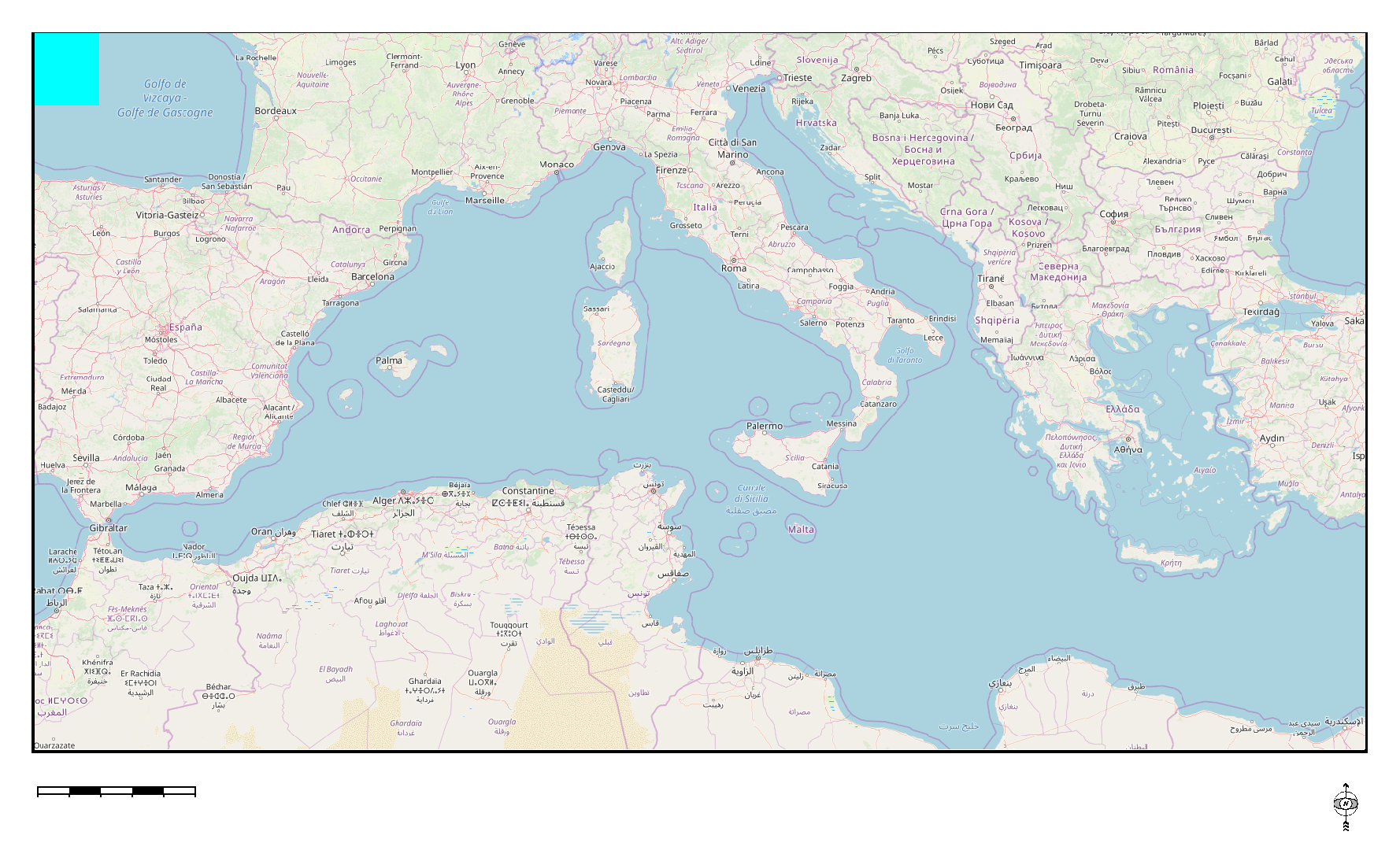
This video, produced by the project POSBEMED, highlights the value of Posidonia oceanica for the Mediterranean. The POSBEMED project in one of the 9 thematic initiatives under the umbrella of the EU Interreg Med PANACeA project on Biodiversity Protection. POSBEMED is led by the Entente Interdépartementale de Démoustication Méditerranée (EID-Med, Montpellier) in France and involves partners from three more Mediterranean countries: the International Union for Conservation of Nature - Centre for Mediterranean Cooperation (IUCN, Malaga, Spain), the International Marine Centre Foundation (IMC, Sardinia, Italy), ECO-logica srl (Bari, Italy) and the Hellenic Centre for Marine Research (HCMR, Anavissos, Greece). Other associated partners are the Hellenic Society for the Protection of Nature (Greece), Ministry of Agriculture, Rural Development and Environment (Cyprus), Larnaka Municipality (Cyprus), Regional Government of the Balearic Islands (Spain), French Agency for Biodiversity (France), and the Municipality of Giovinazzo (Italy). POSBEMED is an Interreg-Med project co-financed by the European Regional Development Fund.
-

The Marine Protected Area Protection Framework (MaPAF; Rodríguez-Rodríguez et al., 2016) was adapted to update progress on the protection of Pelagos Sanctuary marine biodiversity. Accordingly, protection was conceived as an additive process entailing two complementary factors: 1. Legal protection and 2. Managerial protection. Legal protection was assessed through two indicators: 1.1. Legal designation (this specific layer), contributing to protection coverage targets, and 1.2. Regulation stringency, contributing to strict protection targets. Managerial protection was assessed via two indicators: 2.1. Existence of a management authority for the site, and 2.2. Existence of a management plan that is fully implemented. Both indicators are expected to contribute to effective Marine Protected Areas & Other Effective Area-Based Conservation Measures (OECMs) management targets. Thus, a site can be legally protected (typically, an MPA), by management measures (e.g. an OECM), attaining different degrees of conservation to their biodiversity. Therefore, a site that has been endowed a stringent legal designation category which has an appointed managerial authority that fully implements the site’s management plan is assumed to have greater protection than a site with opposite characteristics.
-
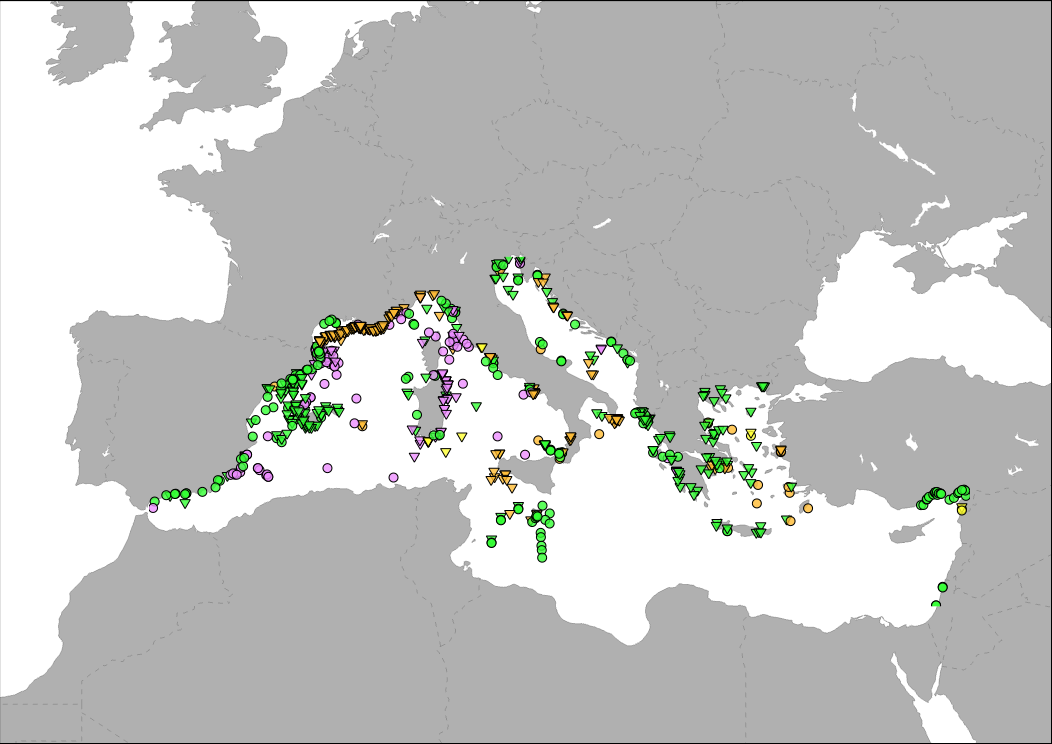
Medbiolitter database summarises results of scientific studies on biodiversity and marine litter interactions in the Mediterranean Sea. To this end, information is collected from different data sources, such as institutions or projects, as well as peer-reviewed publications. The main source of data currently is LITTERBASE/AWI, including only the coverage within the Mediterranean. The database currently comprises 754 records on interactions. Interaction refers to encounters between wildlife and litter items and are classified in four categories: 1) Ingestion, which is the most frequently observed interaction, followed by 2) entanglement, which affects motility, often with fatal consequences, 3) colonization, which occurs when many species settle on floating litter, and 4) others, including different types of less frequent interaction. The database includes among others the location, the type of interaction and litter, marine realm (beach, sea surface, water column, seafloor), habitat, species, whether it occurs in a marine protected area and the type in such case, as well as references to the publication from which the data are extracted. The layer is represented in different ways in the MED Biodiversity platform: 1) Marine litter and biodiversity interactions: it shows the database by type of interaction (ingestion, entanglement, colonization and other) and marine realm (pelagic or benthic). 2) Knowledge update: changes in the number of records in each database version. It tries to represent the efforts of the PANACeA project to gather additional information on the Mediterranean Sea. 3) Marine litter knowledge from 1988 to present date: shows the years of publication of the source of the records in the database. In recent dates, especially since 2015, there has been a notable increase in the number of publications related to marine litter.
-
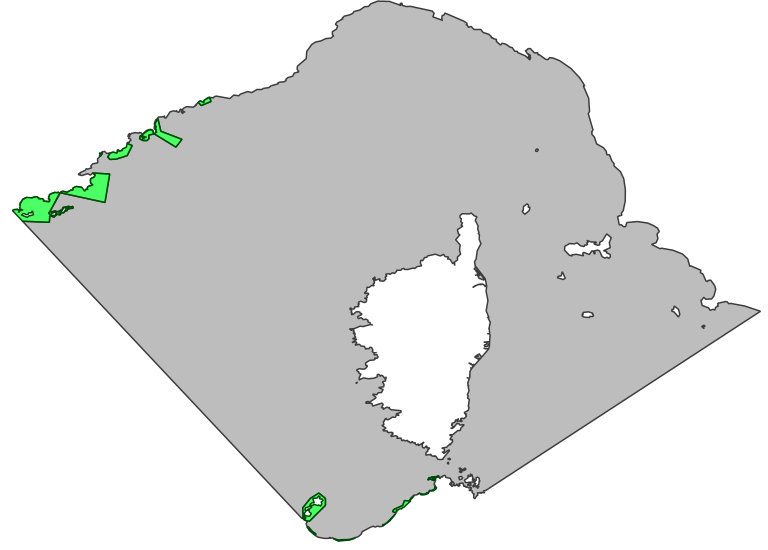
The Marine Protected Area Protection Framework (MaPAF; Rodríguez-Rodríguez et al., 2016) was adapted to update progress on the protection of Pelagos Sanctuary marine biodiversity. Accordingly, protection was conceived as an additive process entailing two complementary factors: 1. Legal protection and 2. Managerial protection. Legal protection was assessed through two indicators: 1.1. Legal designation, contributing to protection coverage targets, and 1.2. Regulation stringency, contributing to strict protection targets. Managerial protection was assessed via two indicators: 2.1. Existence of a management authority for the site, and 2.2. Existence of a management plan that is fully implemented (this layer). Both indicators are expected to contribute to effective Marine Protected Areas & Other Effective Area-Based Conservation Measures (OECMs) management targets. Thus, a site can be legally protected (typically, an MPA), by management measures (e.g. an OECM), attaining different degrees of conservation to their biodiversity. Therefore, a site that has been endowed a stringent legal designation category which has an appointed managerial authority that fully implements the site’s management plan is assumed to have greater protection than a site with opposite characteristics.
-
Transborder Fix line transect are used to assess amount, composition, and spatial distribution of floating macro litter, bigger than 20 cm, along fixed trans-border transects in the Mediterranean basin. The transects, monitored all year round, cross the south east partof Ligurian Sea, Sardinian Balearic basin, Bonifacio Strait, Central Tyrrhenian Sea, Sicilian Sardinian Channels, Adriatic Sea , and Ionian Sea. The surveyed area en-compasses a large portion of the Mediterranean Sea and falls withinthree MSFD marine subregions: the Western Mediterranean Sea, theAdriatic Sea, the Ionian and Central Mediterranean Sea.
-
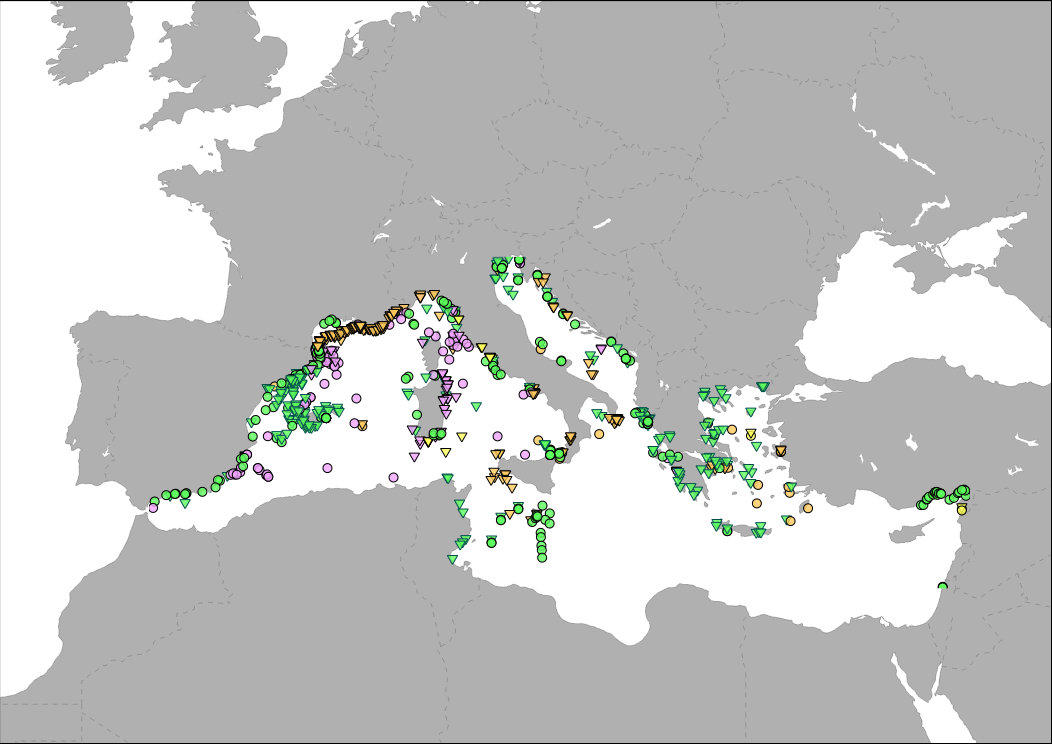
Medbiolitter database summarises results of scientific studies on biodiversity and marine litter interactions in the Mediterranean Sea. To this end, information is collected from different data sources, such as institutions or projects, as well as peer-reviewed publications. One of the main sources of data is LITTERBASE/AWI, only including the coverage within the Mediterranean Sea. The database currently comprises 1056 records on interactions. Interaction refers to encounters between wildlife and litter items and are classified in four categories: 1) Ingestion, which is the most frequently observed interaction, followed by 2) entanglement, which affects motility, often with fatal consequences, 3) colonization, which occurs when many species settle on floating litter, and 4) others, including different types of less frequent interaction. The database includes among others the location, the type of interaction and litter, marine realm (beach, sea surface, water column, seafloor), habitat, species, whether it occurs in a marine protected area and the type in such case, as well as references to the publication from which the data are extracted.
-
Transborder Fix line transects are used by the MedSeaLitter project to assess the amount, composition, and spatial distribution of floating macro litter, bigger than 20 cm, in the Mediterranean basin. The transects, monitored all year round, cross the south east part of the Ligurian Sea, Sardinian Balearic basin, Bonifacio Strait, Central Tyrrhenian Sea, Sicilian Sardinian Channels, Adriatic Sea, and Ionian Sea. The surveyed area en-compasses a large portion of the Mediterranean Sea and falls within the MSFD marine sub-regions: the Western Mediterranean Sea, the Adriatic Sea, the Ionian and Central Mediterranean Sea.
-

Medbiolitter database summarises results of scientific studies on biodiversity and marine litter interactions in the Mediterranean Sea. To this end, information is collected from different data sources, such as institutions or projects, as well as peer-reviewed publications. One of the main sources of data is LITTERBASE/AWI, only including the coverage within the Mediterranean Sea. The database currently comprises 918 records on interactions. Interaction refers to encounters between wildlife and litter items and are classified in four categories: 1) Ingestion, which is the most frequently observed interaction, followed by 2) entanglement, which affects motility, often with fatal consequences, 3) colonization, which occurs when many species settle on floating litter, and 4) others, including different types of less frequent interaction. The database includes among others the location, the type of interaction and litter, marine realm (beach, sea surface, water column, seafloor), habitat, species, whether it occurs in a marine protected area and the type in such case, as well as references to the publication from which the data are extracted.
-

Medbiolitter database summarises results of scientific studies on biodiversity and marine litter interactions in the Mediterranean Sea. To this end, information is collected from different data sources, such as institutions or projects, as well as peer-reviewed publications. The main source of data currently is LITTERBASE/AWI, including only the coverage within the Mediterranean. The database currently comprises 903 records on interactions. Interaction refers to encounters between wildlife and litter items and are classified in four categories: 1) Ingestion, which is the most frequently observed interaction, followed by 2) entanglement, which affects motility, often with fatal consequences, 3) colonization, which occurs when many species settle on floating litter, and 4) others, including different types of less frequent interaction. The database includes among others the location, the type of interaction and litter, marine realm (beach, sea surface, water column, seafloor), habitat, species, whether it occurs in a marine protected area and the type in such case, as well as references to the publication from which the data are extracted.
-
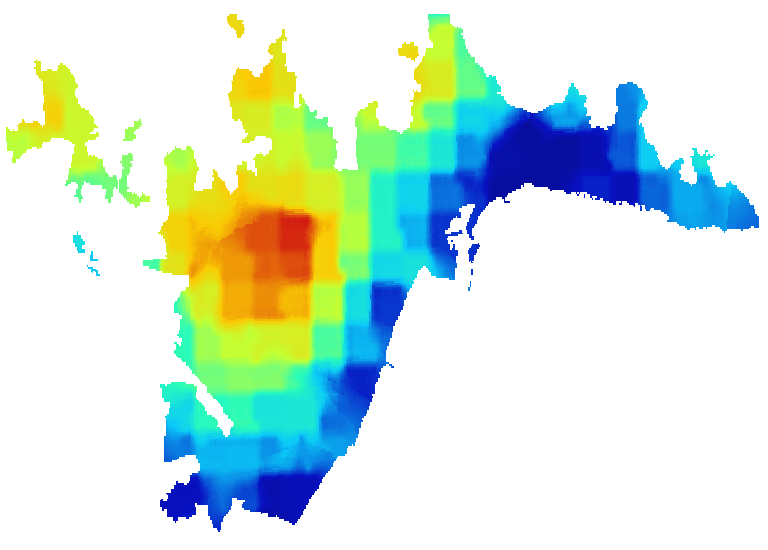
Representación del efecto Isla de Calor Urbana mediante la oscilación térmica media anual diurna por grandes barrios en la ciudad de Málagadesde 2003 a 2023. Para la elaboración de la presente información se han utilizado datos MODIS para el cálculo de la diferencia de temperatura entre área urbana y áreas colindantes. Concretamente se utilizan los datos LST (el término "LST" en el contexto de MODIS se refiere a "Land Surface Temperature" en inglés, que significa "Temperatura de la Superficie Terrestre" en español) derivados de MODIS de TERRA (MOD11A2) y AQUA (MYD11A2), disponibles con una resolución de 1000 m × 1000 m. Solo se procesan los píxeles con cielo despejado (nubosidad 0%) para no meter ruido en los cálculos de medias de temperatura. La franja horaria diurna analizada comprende desde las 13:30 a las 22:30 horas, recopilando datos desde el 2003 hasta el 2023 (20 años). En este caso, se ha realizado la diferencia en LST de los píxeles urbanos y los píxeles no urbanos dentro de una extensión urbana, en este caso la definida como entorno urbano de Málaga. Los datos de la capa pueden utilizarse para identificar las áreas urbanas que son más propensas a experimentar el efecto isla de calor en la Ciudad de Málaga.
